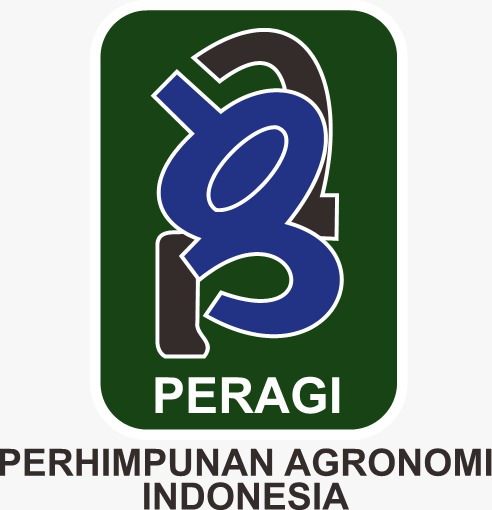Increasing The Growth and Yield of Lowland Rice (Oryza Sativa L.) with Optimum Dosage and Frequency of Potassium
Abstract
Lowland rice is a commodity crop that is very influential in the survival of many people, especially inhabitants in most Asian countries, especially Indonesia. Rice is the staple food of Indonesian people, the shortage of which can result in complications for the country. In connection with this food security issue, it is necessary to make efforts to prevent food shortages. The national production capacity of rice must be increased. The long-term goal is to increase the productivity of rice plants to support Indonesia towards rice self-sufficiency. This study has a short-term objective, namely, to determine the effect of potassium fertilizer and to obtain the best dose on the growth and production of rice plants. This was a factorial experiment using a completely randomized design (CRD) with two factors: the KCl fertilizer dosage and the frequency of fertilizer application. The results showed that the best treatment was with a potassium fertilizer dosage of 150 kg ha-1 with a frequency of 2-time fertilizer application.
Downloads
References
Anugrah, I.S., Sumedi, dan I. P. Wardana. (2008). Gagasan dan implementasi System Of Rice Intensification (SRI) dalam kegiatan Budidaya Padi Ekologis (BPE). Jurnal Analisis Kebijakan Pertanian. 4(1):75–99.
Arshad, M. S., Farooq, M., Asch, F., Krishna, J. S., Prasad, P. V., & Siddique, K. H. (2017). Thermal stress impacts reproductive development and grain yield in rice. Plant Physiology and Biochemistry, pp. 115, 57-72
Asmin dan L. Karimuna. 2014. Kajian pemupukan kalium dengan aplikasi jerami padi terhadap pertumbuhan dan produksi padi sawah bukaan baru di Kabupaten Buton, Sulawesi Tenggara. Jurnal Agroteknos. 4(3): 180-188.
Astuti, D.N. 2010. Pengaruh Sistem Pengairan Terhadap Pertumbuhan Dan Produktivitas Beberapa Varietas Padi Sawah (Oryza Sativa L.). Fakultas Pertanian Institut Pertanian Bogor.
Awan, T. H., Chauhan, B. S., & Cruz, P. C. S. (2014). Growth plasticity of jungle rice (Echinochloa colona) for resource use when grown with different rice (Oryza sativa) planting densities and nitrogen rates in dry-seeded conditions. Weed Science, 62(4), 571-587.
Badan Pusat Statistik Provinsi Riau. 2018. Produksi Padi, Jagung, dan Kedelai di Provinsi Riau. Pekanbaru
Husna Y. (2010). Pengaruh Penggunaan Jarak Tanam terhadap Pertumbuhan dan Produksi Padi Sawah (Oryza sativa L.) Varietas IR 42 dengan Metode SRI (System of Rice Intensification). Journal. Jurusan Agroteknologi. Fakultas Pertanian. Universitas Riau. Vol 9. Hal 2-7.
Lakitan B. (2008). Dasar-Dasar Fisiologi Tumbuhan. Raja Grafindo Persada, Jakarta. 205 hal.
Kasli dan Effendi A.A.R. 2012. Effect of Various High Puddles on the Growth of Aerenchyma and the Growth of Rice Plants (Oryza sativa L.) in Pot. Pakistan Journal of Nutrition. 11(5): 461-466.
Marzuki, Murniati dan Ardian. 2014 . Pengaruh Jarak Tanam Dan Dosis Pupuk Terhadap Pertumbuhan Dan Produksi Padi Sawah (Oryza Sativa L.) Dengan Metode SRI. Fakultas Pertanian Universitas Riau
Manalu VMP, Wirnas D, and Sudarsono D. 2017. Karakter seleksi pada generasi awal untuk adaptasi padi terhadap cekaman suhu tinggi (selection characters in early generation for adaptation of rice to high temperature stress). Indonesian Journal of Agronomy 45(2): 109-11. doi:10.24831/jai.v45i2.12938
Masdar, 2006. Respon Pertumbuhan Reproduktif Tanaman Padi Terhadap Jarak Tanam dan Umur Bibit pada Sistem Intensifikasi Padi (SRI). Jurnal Akta Agrosia 9(2):130-135.
Mustikarini, E. D., LESTARI, T., Santi, R., Prayoga, G. I., & CAHYA, Z. (2022). Evaluation of F6 generation of upland rice promising lines for drought stress tolerance. Biodiversitas Journal of Biological Diversity, 23(7).
Pang JY, Zhou MX, Mendham NJ, Li HB, Shabala S (2004) Comparison of growth and physiological responses to waterlogging and subsequent recovery in six barley genotypes. Aus J Agr Res (55):895-906
Rosmarkam, A dan N.W. Yuwono. (2002). Ilmu Kesuburan Tanah. Kanisius. Yogyakarta.
Sulistyaningsih E, Kurniasih B, Kurniasih E (2005) Pertumbuhan dan hasil caisin pada berbagai warna sungkup plastik. Ilmu Pertanian 12(1):65-76
Suprihatno B. 2010. Deskripsi Varietas Padi. Balai Besar Penelitian Tanaman Padi, Badan Penelitian dan Pengembangan Pertanian Kementrian Pertanian Sukamandi.
Torey P, Nio SA, Siahaan P, Mambu SM (2013) Karakter morfologi akar sebagai indicator kekurangan air pada padi lokal Superwin. Bios Logos 3 (2):57-64
Warda. 2011. Keragaan Beberapa Varietas Unggul Baru Padi Gogo di Kabupaten Banteng Sulawesi Selatan. BPTP Sulawesi Selatan.
Zörb, C., Senbayram, M., & Peiter, E. (2014). Potassium in agriculture–status and perspectives. Journal of plant physiology, 171(9), 656-669
Copyright (c) 2023 Arman Effendi, Sri Yoseva, Suningsih Suningsih

This work is licensed under a Creative Commons Attribution 4.0 International License.
Authors who publish with Jurnal Agronomi Tanaman Tropika (JUATIKA) agree to the following terms:
Authors retain copyright and grant the Jurnal Agronomi Tanaman Tropika (JUATIKA) right of first publication with the work simultaneously licensed under a Creative Commons Attribution License (CC BY 4.0) that allows others to share (copy and redistribute the material in any medium or format) and adapt (remix, transform, and build upon the material for any purpose, even commercially) with an acknowledgment of the work's authorship and initial publication in Jurnal Agronomi Tanaman Tropika (JUATIKA).
Authors are able to enter into separate, additional contractual arrangements for the non-exclusive distribution of the journal's published version of the work (e.g., post it to an institutional repository or publish it in a book), with an acknowledgment of its initial publication in Jurnal Agronomi Tanaman Tropika (JUATIKA). Authors are permitted and encouraged to post their work online (e.g., in institutional repositories or on their website) prior to and during the submission process, as it can lead to productive exchanges, as well as earlier and greater citation of published work.







 More Information
More Information



